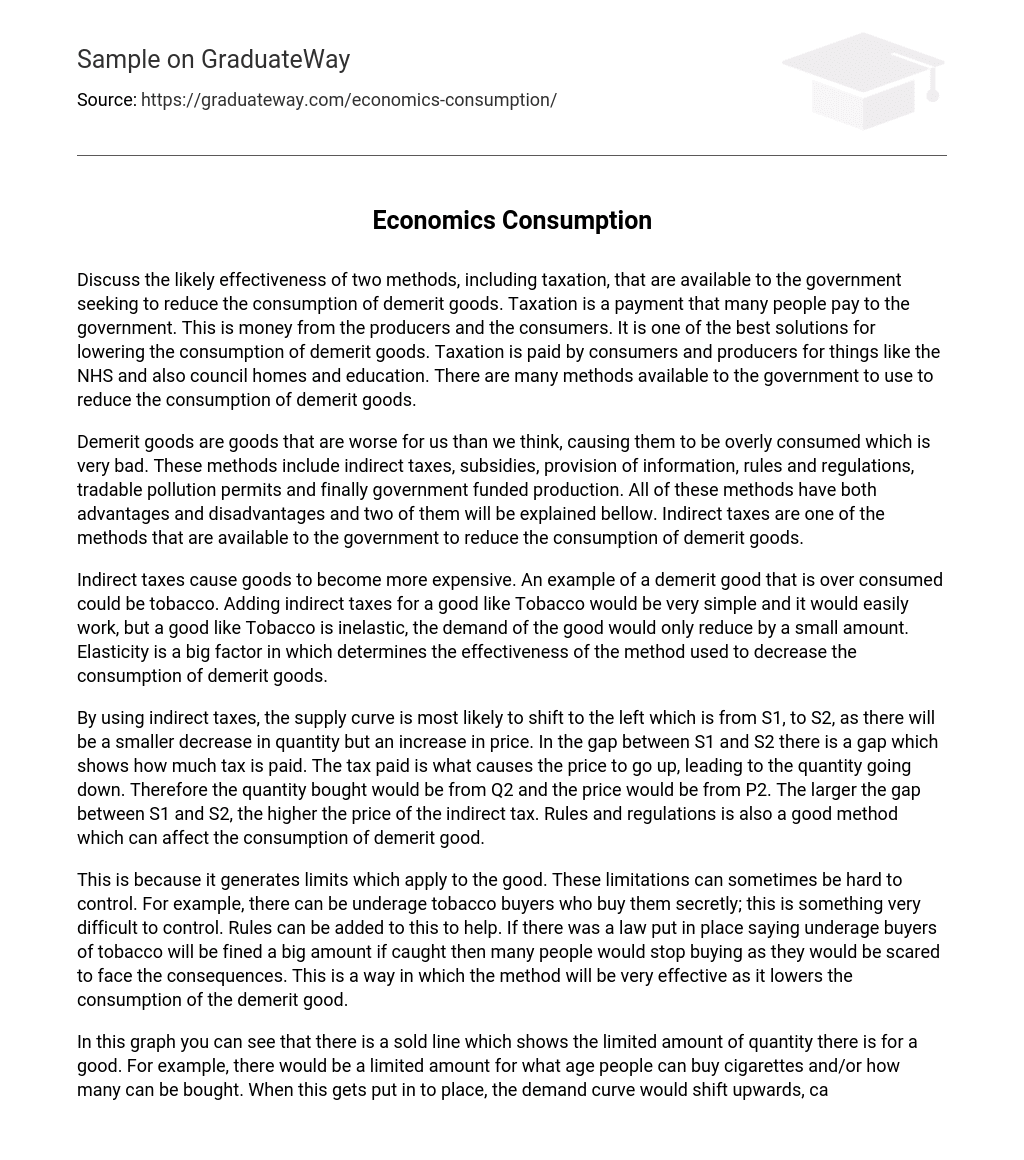When it comes to reducing the consumption of demerit goods, there are two methods that the government can use: taxation and others. Taxation is a payment made by both producers and consumers to the government. It is one of the most effective solutions for reducing consumption. The money collected from taxation can be used for important services like healthcare, education, and housing.
There are many other methods available to the government as well, but taxation remains a popular choice due to its effectiveness in reducing demand for demerit goods.
Demerit goods are products that are more harmful than we realize, leading to excessive consumption which is detrimental. There are several methods to address this issue, including indirect taxes, subsidies, information provision, regulations, tradable pollution permits and government-funded production. Each of these approaches has its own pros and cons. Below we will discuss two of them.
Indirect taxes are a method that the government can use to discourage the consumption of demerit goods.
Indirect taxes cause goods to become more expensive. An example of a demerit good that is overconsumed is tobacco. Adding indirect taxes for a good like tobacco would be very simple and effective, but since tobacco is inelastic, the demand for the good would only reduce by a small amount. Elasticity is a significant factor in determining the effectiveness of methods used to decrease the consumption of demerit goods.
Indirect taxes can cause the supply curve to shift to the left, from S1 to S2. This results in a smaller decrease in quantity and an increase in price. The gap between S1 and S2 represents the amount of tax paid. The tax causes prices to rise, leading to a decrease in quantity bought (from Q2) and an increase in price (to P2). The size of the gap between S1 and S2 determines the magnitude of the indirect tax. Rules and regulations are also effective methods for reducing consumption of demerit goods.
This is because the consumption of demerit goods generates limits that are difficult to control. For example, underage tobacco buyers may purchase these products secretly, making it challenging to regulate. However, rules can be implemented to help mitigate this issue. If a law was put in place stating that underage buyers of tobacco would face significant fines if caught, many people would stop buying due to fear of consequences. This method would be highly effective in reducing the consumption of demerit goods.
In this graph, you can see a solid line that represents the limited quantity of a good. For instance, there is a limit on the age at which people can buy cigarettes and/or the amount they can purchase. When such limits are imposed, the demand curve shifts upwards leading to higher prices. This approach is effective in reducing consumption of demerit goods as their quantity becomes fixed.
In conclusion, I believe that reducing the consumption of demerit goods can be challenging despite the numerous methods available.
Demerit goods are goods that consumers will not stop consuming, such as tobacco. Out of the two methods I have explained, I believe an indirect tax would be the best way to decrease consumption of demerit goods. This is because it is more likely to have a greater impact than rules and regulations since the price will become more expensive. If the government implements indirect taxes, everyone will have to pay for goods like tobacco or even worse things.
On the other hand, tobacco is very addictive, causing people not to care whether the quality of rice has improved or deteriorated. The advantage of using an indirect tax to reduce consumption of demerit goods is that everyone pays them, whether they are regular tobacco buyers or not. This could deter new smokers from starting. However, implementing rules and regulations would be a more challenging way to monitor consumption as not many people would get caught if simple rules were put in place. Additionally, it would be expensive to hire police and guards 24/7 on every road checking if the rules are being followed.





